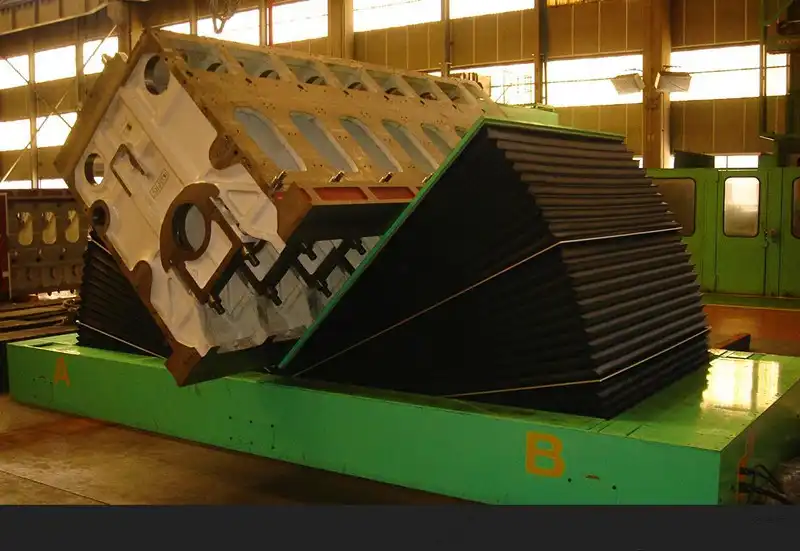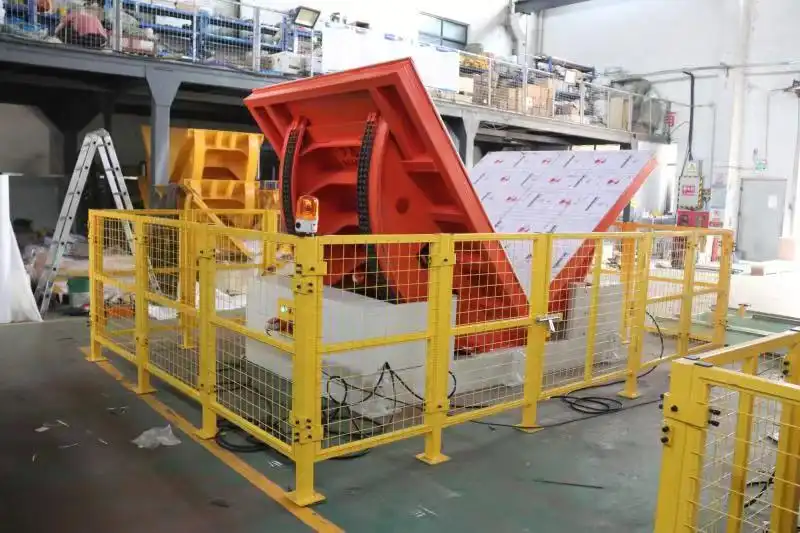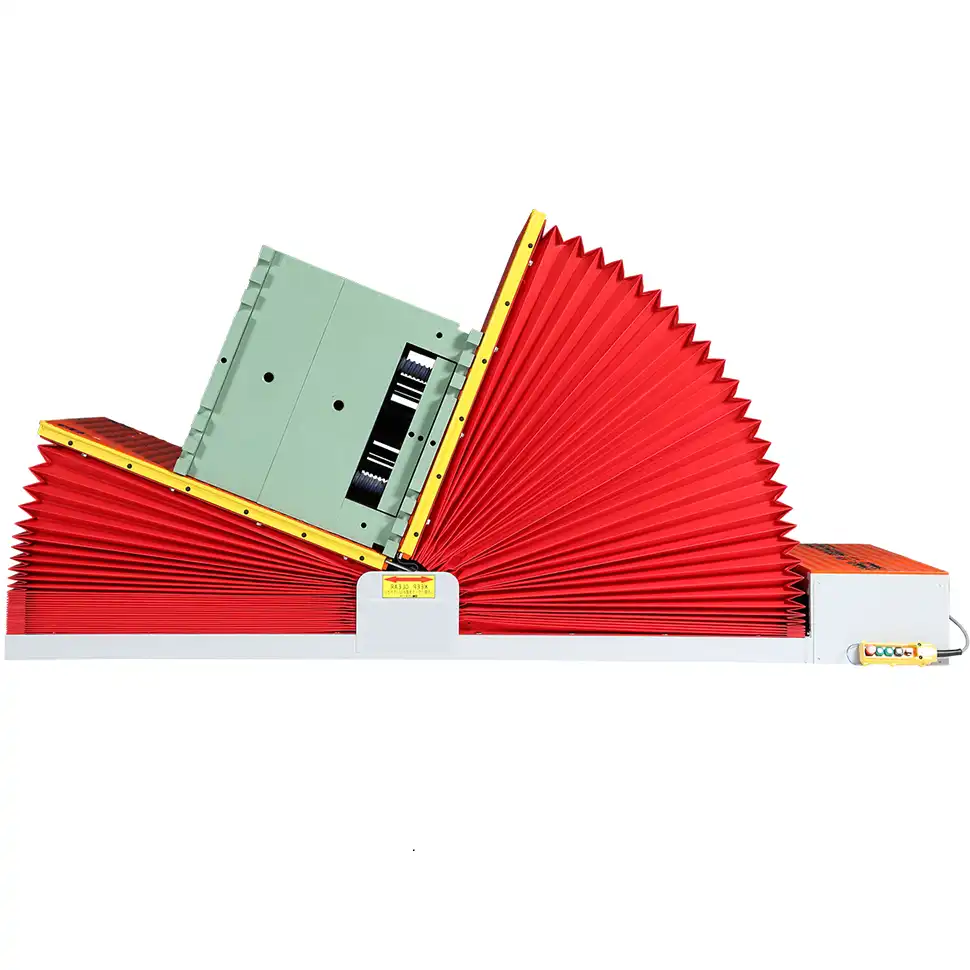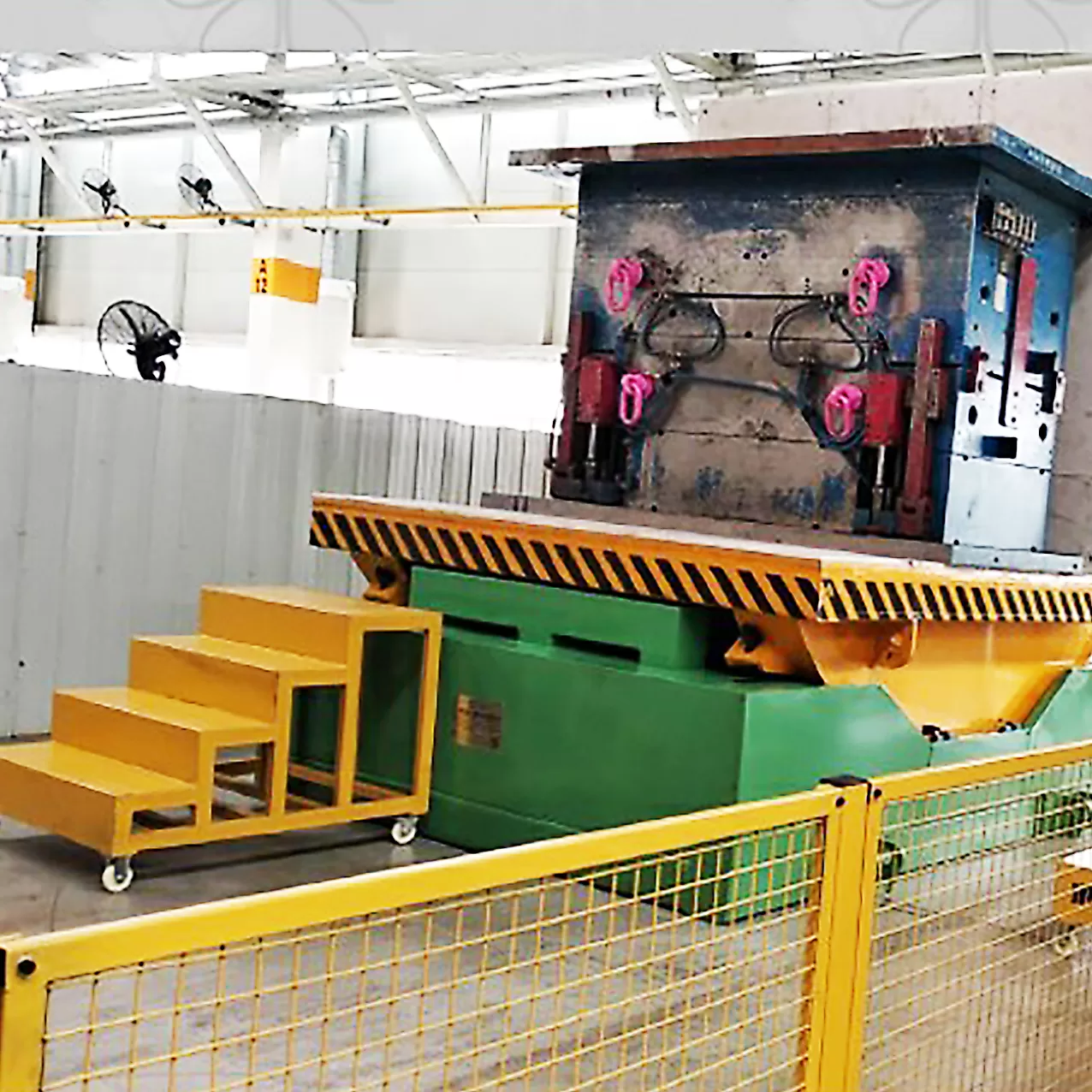Mold Flipper: Which Selection Criteria Fit Vietnam’s Electronics and Plastics Hubs?
Your factory floor is a place of constant motion. In Vietnam's booming electronics and plastics hubs, from Bac Ninh to Binh Duong, the pressure to produce faster and better is immense. You handle heavy, expensive molds every day. Using overhead cranes and manual labor to flip these molds is not just slow; it's a huge risk. You worry about the safety of your team, the potential for damaging a mold worth thousands of dollars, and the production delays that follow any accident. This constant, low-level anxiety about mold handling is a drag on efficiency and morale. What if a single slip could be avoided?
The solution is a dedicated mold flipper. It offers a secure, controlled, and efficient method for orienting your molds for maintenance or production. This specialized equipment is designed to eliminate the risks of traditional methods. However, the Vietnamese market is unique. The specific demands of your high-precision electronics or high-volume plastics operation mean that not just any mold flipper will do. You need to choose a machine that fits your exact needs.

Choosing the right mold flipper is more than a simple purchase; it's a strategic investment in your factory's future. It's about enhancing safety, boosting efficiency, and protecting your most valuable assets. But the specifications on a brochure don't tell the whole story. To make the best decision for your facility in Vietnam, you need to ask the right questions. We need to go deeper than just the price tag and look at the factors that truly matter for your day-to-day operations. Let's break down the critical selection criteria together, so you can choose with confidence.
How does the load capacity and size of the mold flipper impact factory layout in Vietnam?
You've identified the need for a mold flipper, but a new concern arises: space. Your factory floor is already a carefully organized system, and every square meter is valuable. You worry that adding a large piece of equipment could create bottlenecks, block important pathways, or disrupt the entire workflow you've worked so hard to optimize. It feels like a difficult puzzle.
The wrong choice can have serious consequences. A flipper that is too small for your future needs will become obsolete quickly, wasting your initial investment. A machine that is too large for your current space will be a constant obstacle, reducing the very efficiency you hoped to gain. It can force you into a costly and disruptive factory reorganization. This isn't just an inconvenience; it's a direct threat to your productivity in a competitive market.
The key is to perform a thorough analysis of your molds and your factory layout. You need to select a mold flipper with a capacity that not only handles your heaviest current mold but also anticipates future growth. Its physical footprint must integrate seamlessly into your existing production line, enhancing flow rather than obstructing it.
The load capacity and size of a mold flipper directly dictate its footprint and integration into a Vietnamese factory's layout. You must select a capacity that exceeds your heaviest mold's weight for a safety margin and a physical size that fits your available space without creating bottlenecks in your production flow.

Let’s dive deeper into this. I remember a client in Ho Chi Minh City who was focused on producing plastic components for home appliances. They bought a flipper based only on the molds they had at that moment. Within 18 months, they won a new contract for larger parts, and their new molds were 20% heavier than the flipper's maximum capacity. They had to go back to using a crane, which was the risky process they wanted to avoid. This experience taught me that we must look at capacity and size not just for today, but for the next five years.
Analyzing Your Mold Inventory for Capacity
The first step is always to know your own assets. Don't guess. You need to create a detailed list of every mold you use. For each mold, record its weight and dimensions. Your selection process starts with data.
- Maximum Current Weight: Identify the single heaviest mold in your facility right now. This is your baseline.
- Safety Margin: A fundamental rule in engineering is to never operate at 100% capacity. I always advise clients to choose a mold flipper with a capacity that is at least 20-25% higher than their heaviest mold. This buffer accounts for slight variations and reduces long-term strain on the machine's components.
- Future Growth: Think about your business strategy. Are you planning to enter new markets or produce larger components? Talk to your sales and engineering teams. If you plan to expand, your new molds will likely be bigger and heavier. Factoring in this potential growth now saves you from a very expensive problem later.
| Mold Weight Range | Recommended Flipper Capacity | Rationale |
|---|---|---|
| Up to 5 Tons | 7-8 Ton Capacity | Provides a safe margin for smaller electronics and plastic part molds. |
| 5 - 15 Tons | 20 Ton Capacity | Covers a wide range of medium-to-large molds for automotive or appliance parts. |
| 15 - 30 Tons | 35-40 Ton Capacity | For very large molds, common in producing large plastic casings or die-casting. |
| Over 30 Tons | Custom Solution | Requires a bespoke machine designed for your specific, heavy-duty application. |
Footprint and Factory Flow
Once you know the required capacity, you can look at the physical machine. The machine must fit your space. In many Vietnamese factories, especially in established industrial parks, space is at a premium.
- Measure Your Space: Before you even look at a brochure, measure the exact area where the flipper will be installed. Check for overhead clearance, especially if you plan to use a crane to load the flipper.
- Consider Workflow: How will molds get to the flipper? How will they leave? The flipper should be placed logically between your mold storage area and your press machines. It should not create a dead end or force forklifts and workers to take long, inefficient routes.
- 90° vs. 180° Rotation: The type of rotation affects the machine's design and footprint. A 90° flipper is often more compact and is perfect for upending a mold for placement on a press bed. A 180° flipper is needed for maintenance, allowing access to both halves of the mold. The 180° models can sometimes require a larger area. The choice depends entirely on your process. Do you need to just flip, or do you need to open and work on the mold?
This isn't just about fitting a machine in. It's about optimizing your entire production process. A well-placed flipper can shave minutes off every mold change, and over a year, that adds up to a significant increase in productivity.
What safety features are non-negotiable for a mold flipper in a modern Vietnamese factory?
As a factory owner or manager, the safety of your people is your number one responsibility. You know that a serious accident can be devastating for your team and your business. When you look at a powerful machine like a mold flipper, which handles tons of steel, you naturally feel a sense of caution. You want to be certain that the machine has every possible protection built-in.
The fear is that a failure—mechanical or electrical—could lead to a catastrophic event. A mold could slip, a part could fail under load, or an operator could make a mistake. In Vietnam's fast-paced production environment, where workers are focused on meeting targets, the risk of human error is always present. An unprotected machine is a serious liability, threatening not only worker safety but also your operational license and reputation.
You can eliminate this risk by insisting on a machine with comprehensive, non-negotiable safety features. True safety isn't an option; it's a core design principle. By understanding and demanding these features, you transform the mold flipper from a potential hazard into a cornerstone of a safe and modern factory environment.
Non-negotiable safety features for a mold flipper in Vietnam include robust mechanical locking systems, electrical interlocks, emergency stop buttons, and physical guarding. These systems work together to prevent accidental operation, secure the mold during rotation, and protect operators from moving parts.

I will never forget visiting a factory years ago that was using a very basic, locally made tilter. It had no safety interlocks. A worker started the rotation while his colleague was still adjusting the clamps. It was a near-miss that could have been a tragedy. Since that day, I have made it a personal mission to educate everyone I can about safety systems. They are not "extras." They are the most important part of the machine. Let's break down exactly what you should be looking for.
Mechanical and Electrical Safeguards
These are the core systems that prevent catastrophic failure. They are the machine's brain and muscle, working together to ensure every operation is performed safely.
- Mechanical Locks: The machine should have heavy-duty mechanical locking pins or brakes that automatically engage when the rotation stops. This ensures that even if the hydraulic or electrical power fails, the table and the multi-ton mold on it will not move. It's a physical guarantee against gravity.
- Electrical Interlocks: This is a system of sensors that prevents the machine from operating in an unsafe state. For example, the rotation motor should not be able to start unless the mold is properly clamped. Limit switches should automatically stop the rotation at the 90° or 180° mark, preventing over-travel.
- Overload Protection: The electrical and hydraulic systems must have built-in overload protection. If the machine tries to lift a weight that exceeds its capacity, or if something gets jammed, the system should automatically shut down to prevent damage to the motor, the hydraulics, and the machine's structure.
Operator Protection and Ergonomics
These features are designed to protect the people working with and around the machine.
| Safety Feature | Function | Why It's Critical in a Busy Vietnamese Factory |
|---|---|---|
| Emergency Stop (E-Stop) Buttons | Immediately cuts all power to the machine when pressed. | Must be large, red, and placed in easily accessible locations. In a noisy factory, a worker must be able to stop the machine instantly without thinking. |
| Physical Guarding / Fencing | Creates a physical barrier around the machine's moving parts. | Prevents workers from accidentally walking into the machine's operational zone or reaching into a dangerous area. This is vital in crowded factory floors. |
| Light Curtains / Safety Scanners | An invisible infrared beam. If a person or object breaks the beam, the machine stops instantly. | Offers a higher level of protection than physical guards alone. It's an active safety system that responds to intrusions, ideal for semi-automated work cells. |
| Hold-to-Run Controls | The machine only operates while the operator is actively pressing the button. | This prevents the operator from starting the machine and walking away. It ensures they are present and observing the entire operation, ready to stop if needed. |
Compliance with Standards
For many Vietnamese companies, especially in the electronics sector, you are part of a global supply chain. Your customers in Europe or North America will expect your factory to meet international safety standards. Insisting on a machine with CE (European Conformity) or equivalent certification is not just about compliance; it's a sign of quality. It proves the machine has been independently assessed and meets a high bar for safety design and construction. This can be a major advantage when being audited by your international clients.
How do you balance the cost of a mold flipper with its long-term ROI in a competitive market like Vietnam?
You are running a business, and every major purchase must make financial sense. When you see the price tag for a high-quality mold flipper, your first instinct might be to look for a cheaper alternative. The pressure to keep costs down is intense, especially in Vietnam's highly competitive plastics and electronics industries where margins can be thin.
The trap is focusing solely on the initial purchase price. A cheaper machine might save you money today, but it can become a financial black hole over time. You start to see frequent breakdowns, which lead to production stoppages. You spend more on maintenance and spare parts. Its energy consumption might be higher. Worse, if it's less efficient, it can slow down your entire production line, costing you far more in lost output than you ever saved on the initial purchase.
The solution is to shift your mindset from "cost" to "investment." A well-chosen mold flipper is not an expense; it's a strategic asset that generates a return. By calculating the long-term Return on Investment (ROI), you can clearly see how the machine pays for itself through increased efficiency, reduced costs, and improved safety. This data-driven approach allows you to justify the investment and make the smartest long-term decision for your company.
To balance cost with ROI for a mold flipper in Vietnam, you must look beyond the initial purchase price. Calculate the total cost of ownership, including maintenance and energy, and weigh it against quantifiable gains in efficiency, reduced mold damage, and improved worker safety to determine the payback period and long-term value.

I often speak with pragmatic business owners like Javier Morales, who I profiled. They look at every investment through the lens of ROI. They understand that the real cost of a machine isn't what you pay for it; it's what it costs to own and operate over its entire life. Let me walk you through how to think like that for a mold flipper in your factory.
Calculating Total Cost of Ownership (TCO)
The initial price is just one part of the equation. A true comparison must include all costs over the machine's expected lifespan (e.g., 10-15 years).
- Purchase Price: The initial capital outlay.
- Installation & Commissioning: The cost to have the machine professionally installed, calibrated, and your team trained. A quality supplier will include this or offer it as a clear package.
- Energy Consumption: A machine with an efficient hydraulic power pack and modern electric motors will use significantly less electricity. Over a decade, this can add up to thousands of dollars in savings. Ask for the power rating (kW) and estimate its operational hours.
- Maintenance & Spares: A well-built machine from a reputable manufacturer like SHJLPACK uses high-quality components that last longer. A cheaper machine might use lower-grade steel, bearings, or hydraulics that wear out faster, leading to higher costs for spare parts and technician time.
- Downtime Costs: This is the biggest hidden cost. What is the cost to your business for every hour your production line is stopped because the flipper is broken? This often dwarfs all other costs.
Quantifying the "Return" on Your Investment
Now, let's look at the "R" in ROI. How does the machine generate value? You need to measure the gains.
| Value Driver | "Before" (Crane & Manual) | "After" (Mold Flipper) | Annual Savings Example (VND) |
|---|---|---|---|
| Mold Changeover Time | 60 minutes | 15 minutes | (45 min savings) x (4 changes/day) x (250 days) = 750 hours saved. |
| Labor for Flipping | 2-3 workers + crane operator | 1 operator | (2 workers) x (hourly rate) x (750 hours) = Significant Labor Savings |
| Mold Damage Incidents | 1-2 incidents per year | 0 incidents | (Cost per incident, e.g., 100,000,000 VND) x 1.5 = 150,000,000 VND saved |
| Workplace Accidents | Low but significant risk | Risk virtually eliminated | Avoided medical bills, fines, and production loss. The value is immense. |
By putting real numbers from your own operation into a table like this, the payback period often becomes clear. Many of my clients find that a high-quality mold flipper pays for itself in just 18 to 36 months. After that, it's pure profit for the rest of its long service life. This is the kind of analysis that turns a "cost" into a clear, strategic win.
My Insights

I started my career as an engineer on the factory floor. I've felt the grease on my hands and seen the pressure in the eyes of the production managers. Later, when I built my own factory, I had to sign the checks for every piece of equipment. I understand both sides of this decision. That journey has taught me one fundamental lesson: the most successful companies don't just buy machines; they invest in solutions and build partnerships.
When you are considering a mold flipper for your facility in Vietnam, you are at a crossroads. One path leads to simply buying a piece of equipment based on price. The other path leads to choosing a strategic asset that will improve your entire operation. A mold flipper is not just steel, motors, and wires. It is a physical manifestation of your company's commitment to safety, efficiency, and quality.
Think of it this way: every time that machine turns, it is saving you time. Every time it securely holds a mold, it is protecting a valuable asset from damage. Most importantly, every day it operates, it is protecting your people from a dangerous task. This is the bigger picture.
Vietnam is rising as a global manufacturing powerhouse. To compete and win, especially in demanding sectors like electronics and plastics, you cannot rely on the old ways of doing things. You must embrace technology that makes you safer, faster, and more reliable. A mold flipper is a key piece of that puzzle. My advice is to look for a supplier who understands this. Look for someone who asks you about your molds, your factory flow, and your business goals. Look for a partner who wants to help you succeed, not just sell you a box. This is the philosophy we built SHJLPACK on, and it's the most valuable insight I can share.
Conclusion
Choosing the right mold flipper is a strategic decision. Focus on capacity, non-negotiable safety features, and long-term ROI to empower your Vietnamese factory's growth and ensure operational excellence.





